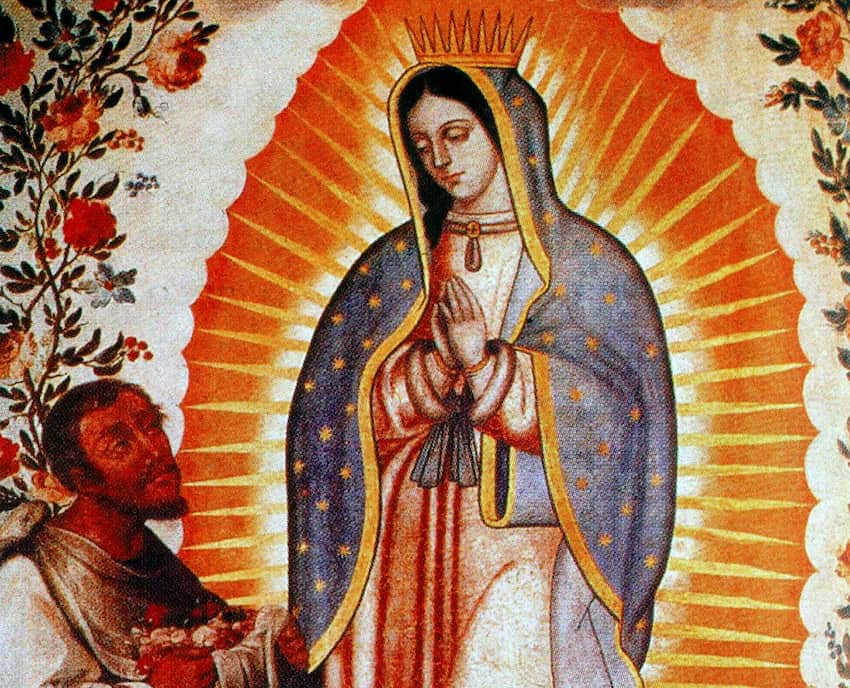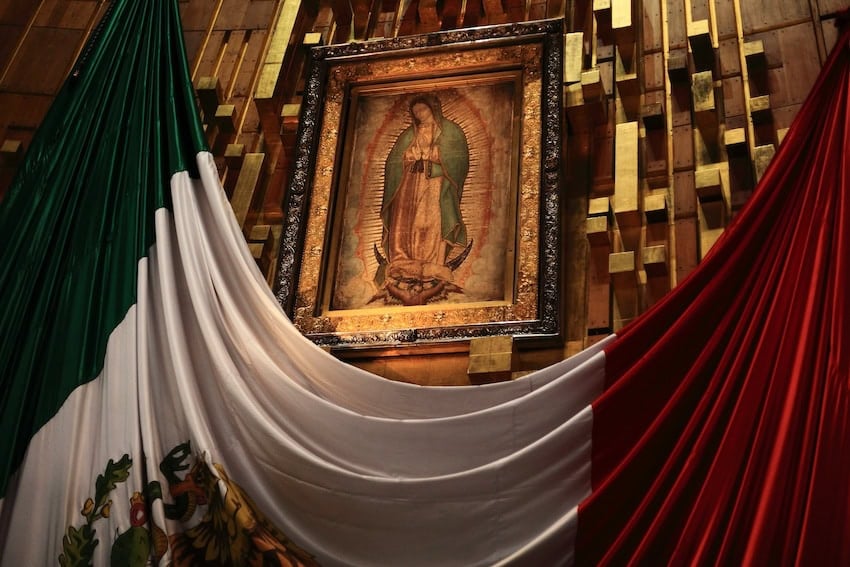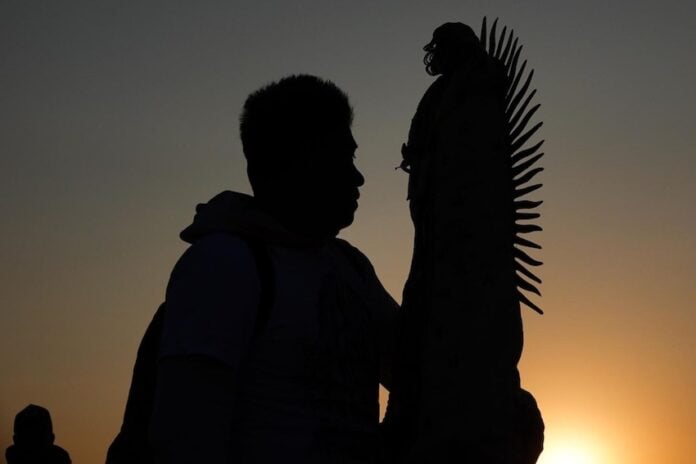Every Mexican child raised in a Catholic home knows the story. Early in Mexico’s colonial period, in 1531, Juan Diego, a recently Christianized Indigenous Chichimec man working near Mexico City, had a revelation: The Virgin Mary appeared to him one day while on his way to work.
Startled by the radiant light before him, he fell on his back and looked up. A voice said to him: “Listen and understand, my youngest son, that nothing should frighten or distress you,” the Virgin Mary told him. “Am I not here, I who am your mother?”
St. Juan Diego’s revelation

Distressed by the illness of a beloved uncle, Juan Diego desperately needed to work and couldn’t afford to be late. And so he ran and said nothing about it to anyone. However, Catholic legend has it, the Virgin appeared to him two more times and insisted that he testify about her appearance before the Mexico City diocese and that she wanted the Church to build her a shrine.
Faced with the disbelief of the Church’s high command in New Spain, around 1531, the bishops there demanded proof of this apparition. Why would the Mother of God appear before a poor Indigenous man, they scoffed?
As supposed irrefutable proof, the Virgin Mary then imprinted herself on Juan Diego’s cloak. In the image, she bore Juan Diego’s darker skin tone and wore a black Mexica sash that symbolized pregnancy.
Was this an image of divine creation — as millions of Catholics worldwide believe? And why did some contemporaries of the image’s appearance claim that it was a fake, created by an Indigenous artist?
Who is the Virgin of Guadalupe, and why is she important in Mexico?
Widely seen as a symbolic heiress to the Indigenous veneration of Tonantzin, the Mexica mother goddess, the Virgin of Guadalupe is one of Catholic Mexico’s most beloved religious figures. She gets four days of celebration each year by the most devout, marking the days on which she supposedly appeared to Juan Diego, who was only made a Catholic saint in 1990.
What is clear is that this darker-skinned image of the Virgin Mary was an effective colonizing tool during the spiritual conquest of Mexico and Latin America in the 1500s. It is certainly logical that the Catholic friars of New Spain would seek out icons to resonate with the conquered Indigenous population and encourage them to convert, so today, it’s widely accepted that they took the Mexica mother goddess Tonantzin and gave her a Christian makeover as María de Guadalupe.

This version of the Virgin Mary had already long existed as a dark-skinned Madonna in many iterations throughout Spain, including in the Spanish town of Guadalupe, where the Monastery of Santa María de Guadalupe was located. Her Catholic feast days also coincided with those of Tonantzin, so the cult easily could remain virtually intact, with only Tonantzin’s name changed to a European one.
The impact of this decision by the 16th-century friars in Mexico was so great that, even 500 years later, some Mexicans think of themselves not as Catholics but as guadalupanos. After Mecca in Saudi Arabia, the Guadalupe basilica in Mexico City, which contains a shrine dedicated to María de Guadalupe, is one of the world’s most visited, receiving over 12 million visitors annually.
Divine blessing or the work of a human artist?
As early as 1556, the Franciscan friar Francisco de Bustamante was quoted in Church records as saying that the supposedly miraculous image of the Virgin on Juan Diego’s cloak was a fake wrought by human hands.
According to contemporary historical research, Bustamante criticized the Catholic Church in Mexico for encouraging belief in the Juan Diego story, saying it was encouraging superstitious beliefs among Indigenous Catholics and that the image had been painted by a human. The criticism prompted Mexico City’s Archbishop, Alonzo de Montúfar, to open an inquiry into the matter, at which Bustamante and four witnesses testified that the cloak’s image was painted by human hands, with one witness identifying the artist as “the Indian, Marcos.”
Some researchers believe that this artist may have been a man named Marcos Cipac de Aquino, an Indigenous painter contemporary to the period of the Guadalupe miracle. De Aquino is referred to by the conquistador and chronicler Bernal Díaz de Castillo, who famously wrote “The True History of the Conquest of New Spain.”
The Michelangelo of Mexico
Díaz doesn’t say anywhere that de Aquino painted the Guadalupe image, but if the image on Juan Diego’s cloak was a human creation, de Aquino could be a compelling candidate for its authorship: Díaz referred to him in his writings as “one of three excellent native painters” in the Americas and compared him to the Italian artist Michelangelo.

In 1981, however, researchers Philip Serna Callahan and Jody Brant Smith examined the Guadalupe image under infrared light and were unable to find any trace of sizing or sketching of the original image underneath the paint, which would have been common if it had been painted by an artist.
The researchers concluded that there was no scientific explanation for how the oldest, original parts of the image got there, or for its long-lasting preservation — one factor that is often cited by contemporary believers as proof of its divine creation.
Regardless of where the painting comes from, the debate over the cloak remains a lively topic of conversation in Mexico today.
Andrea Fischer contributes to the features desk at Mexico News Daily. She has edited and written for National Geographic en Español and Muy Interesante México, and continues to be an advocate for anything that screams science. Or yoga. Or both.
